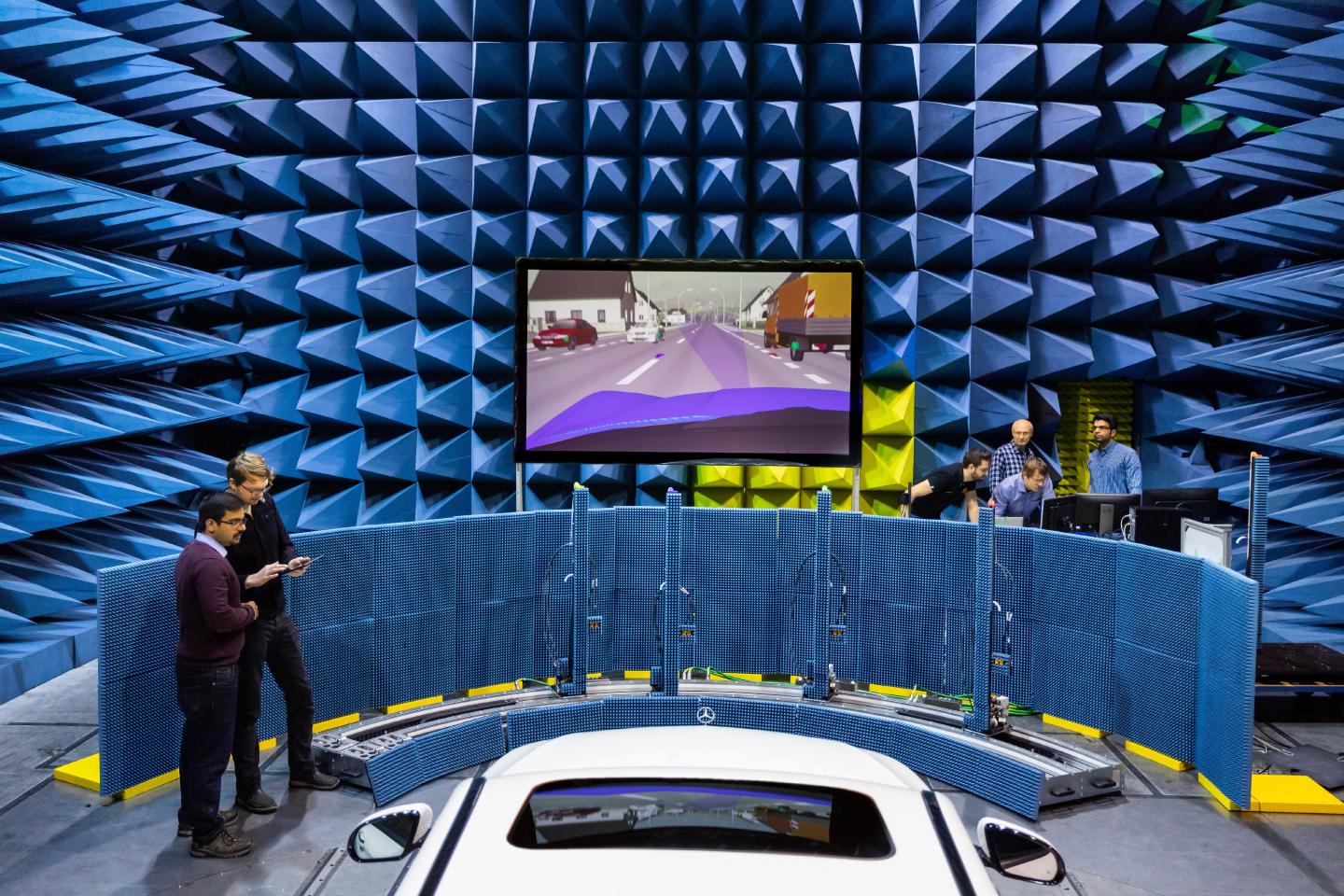
Connected and automated driving challenges the testing of the highly interdependent operational driving, electronic sensing, and communication functions, foremost radar, lidar, and camera. The exploding number of safety requirements necessitates reliable and efficient validation methods for highly automated driving at levels 3 to 5 (i.e., conditional, high and full driving automation).
Vivaldi has teamed up with the Japanese DIVP (Driving Intelligent Validation Platform) project in order to synergize and collaborate under the label VIVID (German Japan Joint Virtual Validation Methodology for Intelligent Driving Systems). The central question is: “How safe is safe enough?” Hence, the key objective of both projects is the design and implementation of a virtual validation tool chain, reaching from SiL- (Software-in-the-Loop) to OTA/ViL-methods (Over-The-Air, Vehicle-in-the-Loop), connecting software-based traffic and sensor simulations with propagation modeling and over-the-air hardware-in-the-loop testing in virtual environments. A digital scenario-based test strategy built upon the physical principles of false positive and false negative responses is key to control the otherwise infinite test parameter space. The twin projects merge and significantly extend relevant knowledge from major cross-ministerial research and development efforts, yielding a holistic modular approach for future safety assurance.
Based on joint efforts, VIVID aims at establishing a testing tool chain, to evaluate “how safe is safe enough”, through the following research goals:
- scenario-based comparison of real and virtual drive tests, software- and hardware-based simulations including physical sensor, wave propagation, and environmental effects
- identification of areas that are critical to sensors like highways, toll gates, bridges or parking areas
- virtual verification and validation of installed-system performance of multi-sensor platforms (radar, lidar, camera) including advanced sensor models and co-simulation platforms
- open interfaces employing widely adopted software and data interfaces for a sensor technology- and platform-agnostic sustainable use and routes towards global standardization.
DLR contributes expertise in scenario design and scenario space exploration as well as real world testing on site. Being also a member of the projects VVM and SETLevel (and former projects PEGASUS and EnableS3), DLR strives to embed Vivaldi into the PEGASUS project family and exploit synergies through the (transfer project) TPX project, like establishing a common terminology among project participants in form of a glossary.
Project title:
VIVID - Virtual Validation Tool Chain for Automated and Connected Driving
Duration:
10/2020 to 09/2023
Total Project Value:
€ 3.700.000 (funded by the Federal Ministry of Education and Research (BMBF))
Project executing organization:
VDI – The Association of German Engineers
Project participants:
AVL
Blickfeld
Continental
German Aerospace Center (DLR)
IPG
KIT
Mercedes-Benz
Technical University of Darmstadt
Thüringer Innovationszentrum Mobilität at the Technical University of Ilmenau
Kempten University of Applied Sciences
